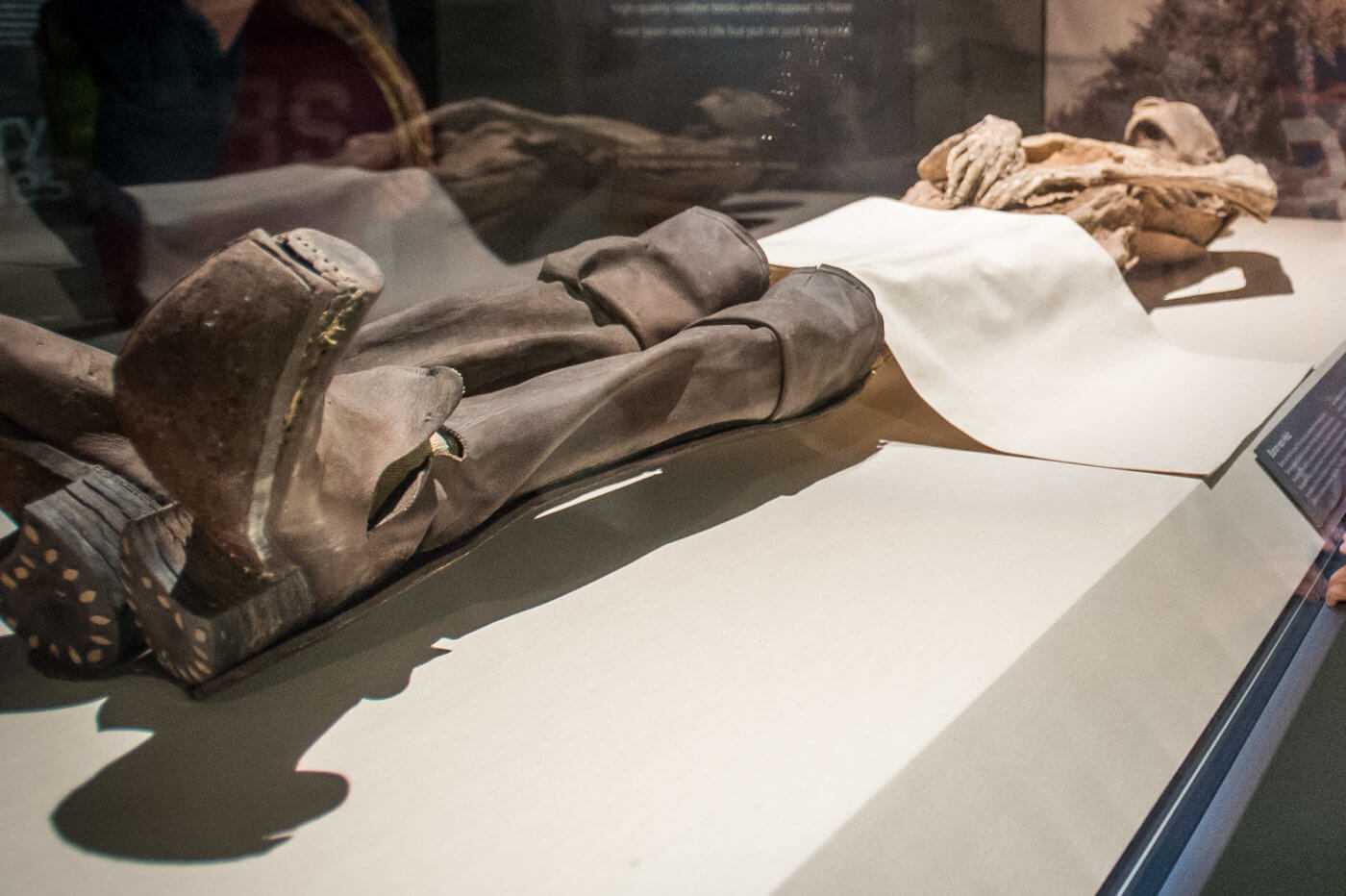Real Mummies. Real Science. Real People.

Described as “fascinating, intriguing, and inspiring,” by NBC, “absolutely extraordinary,” by NPR and “a must see,” by FOX TV, Mummies of the World: The Exhibition will instill a sense of curiosity and wonder in each and every visitor. With more than 2 million worldwide visitors to date, the traveling exhibition is one of the most popular in the world.
Embark on a journey into the extraordinary world of mummies and mummification. Through modern science, Mummies of the World: The Exhibition demonstrates how the mummification process takes place and highlights real advances in the scientific methods used to study mummies, including Computed Tomography (CT), ancient DNA analysis and radiocarbon dating, all of which allow researchers to answer questions about the lives, history and cultures of the mummies. Who were they? Where did they come from? And what can they teach us?
What secrets do mummies hold about the past? What clues do they bring us for the future? A journey awaits as we unravel their mysteries.
Are the Mummies Real?
Mummies of the World: The Exhibition is the largest collection of real mummies and related artifacts that has ever been assembled. You will be seeing a fascinating collection of mummies with some incredible stories, including:
The Vac Mummies, a mummified family from Hungary believed to have died from tuberculosis
The Baron Von Holz, a German nobleman found tucked away in the family crypt of a 14th century castle wearing his best leather boots
The Burns Collection, a group of medical mummies used to teach anatomy in the early 19th century
An Egyptian priest named Nes-Hor who we have determined had arthritis and a broken left hip
Egyptian animal mummies including a cat, falcon, snow rabbit, lizard, weasel and fish, some of which were deliberately preserved to accompany royals in the afterlife.
MUMAB, the first replication of Egyptian mummification done on a body in 2,800 years
And much more….
Information for Families
Adults and children are welcome and encouraged to visit Mummies of the World: The Exhibition. Families across the country have enjoyed the exhibition, now having been visited by over 2 million people across the world. As each and every family is different and some children are at different stages of development, we recommend that you become familiar with the exhibition before deciding whether or not to share the experience with your child. The below questions have been answered to help you understand and share with children the premise of the exhibition.
THINGS TO SHARE WITH CHILDREN
What’s It All About?
The special exhibition is designed to teach us how mummies are created through both natural processes and intentional practices. The exhibition is comprised of real mummies and artifacts from around the world, including Europe, South America and Ancient Egypt, some of which date back more than 4,500 years. You will learn that mummification has occurred throughout history in various cultures and environments. You will discover how current science tools enable us to study mummies without unwrapping or otherwise damaging them. Most of the mummies on display have been recently studied with some of the latest science technology, so that we may find out new information about them. Studying mummies provides insight into ancient peoples, environments and civilizations.
Are the Mummies Real?
Mummies of the World: The Exhibition is an exhibition of real human and animal bodies that have been preserved through mummification, a process that occurs after death and is an interruption of the normal process of decomposition.
What Is A Mummy?
Mummification is a process where some of the soft tissue of bodies are preserved. Soft tissues are those parts of an organism that usually decay soon after death: skin, muscle, internal organs, hair and nails. Preserved bones and teeth without soft tissue are not mummified remains.
From where do these mummies originate?
The mummies on display were found in countries all over the world and have been taken care of in museums for more than 100 years. The museums have loaned the mummies to this exhibition so that everyone can learn from them.
Educator’s Guide
This standards-based guide is written for students as a supplement to a visit to Mummies of the World: The Exhibition.
The guide includes interpretive passages that have been crafted so that they may be read directly by students as an introduction to each unit, or by teachers in preparation for teaching each unit. The activities that accompany the interpretive text have been developed to give students hands-on, inquiry-based learning experiences.
The interpretive passages and activities provide connections to National Education Standards not only for history and science, but for language arts, behavioral studies and life skills for Grades 4-8.
A composite listing of National Education Standards addressed by this study guide are included, and individual standards are listed with each activity for easy reference.